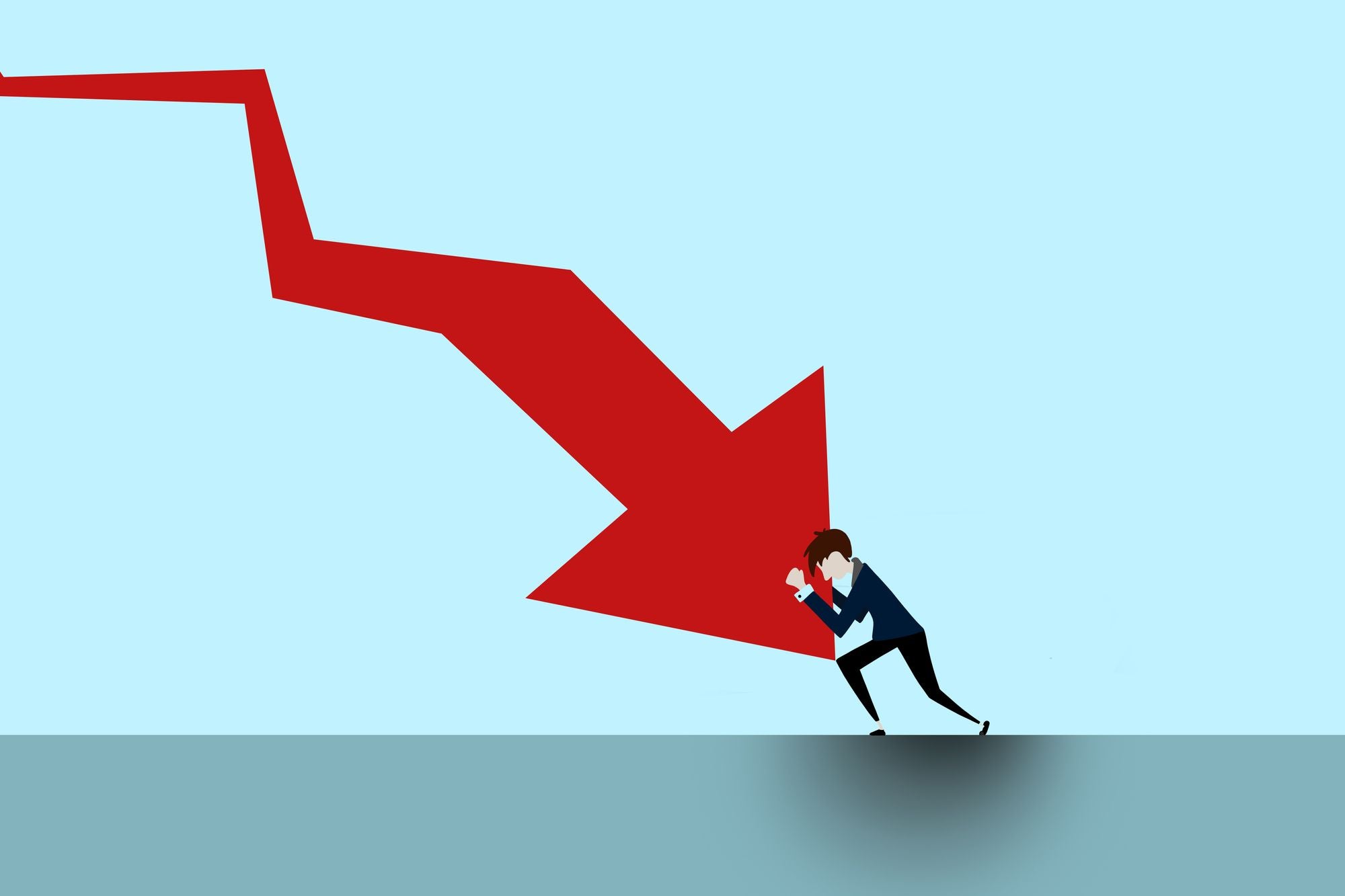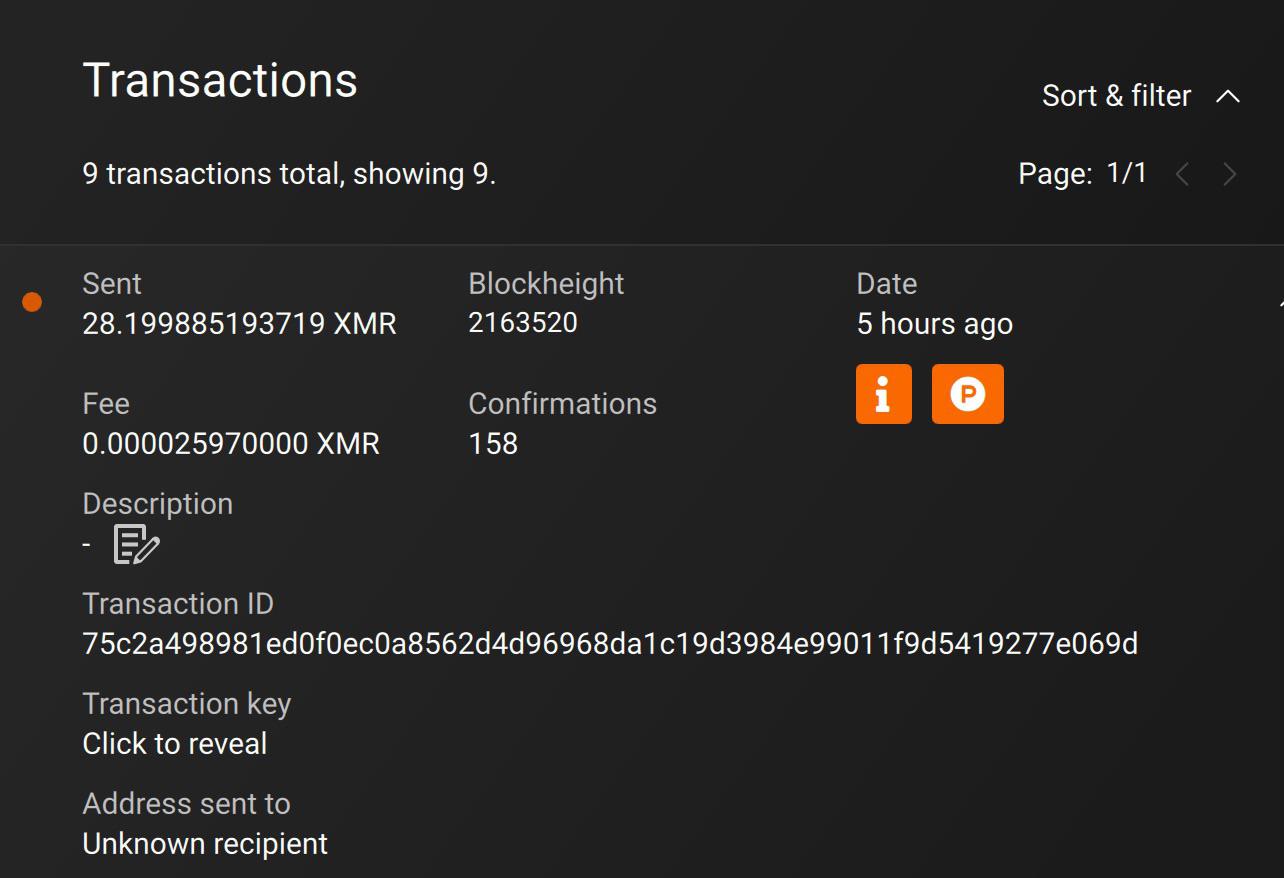Home>Finance>What Typically Happens To Savings Rates During Recessions?


Finance
What Typically Happens To Savings Rates During Recessions?
Published: January 16, 2024
Discover how savings rates are typically affected during recessions in the finance industry. Understand the impact of economic downturns on your savings.
(Many of the links in this article redirect to a specific reviewed product. Your purchase of these products through affiliate links helps to generate commission for LiveWell, at no extra cost. Learn more)
Table of Contents
- Introduction
- Economic theory behind savings rates during recessions
- Historical data on savings rates during recessions
- Factors affecting savings rates during recessions
- Impact of government policies on savings rates during recessions
- Case studies of savings rates during past recessions
- Conclusion
- References
Introduction
During times of economic uncertainty, such as recessions, individuals and households tend to reevaluate their financial situations and make adjustments to adapt to the changing economic landscape. One significant aspect of personal finance that is often impacted during recessions is savings rates. Savings rates, which represent the percentage of income that individuals save rather than spend, can fluctuate in response to economic conditions, including recessions.
In this article, we will explore what typically happens to savings rates during recessions. We will delve into the economic theory behind savings rates, examine historical data, discuss the factors that influence savings rates during recessions, analyze the impact of government policies, and provide case studies of savings rates during past recessions.
Understanding the behavior of savings rates during recessions is not only significant for individuals and households, but also for policymakers, economists, and financial institutions. These insights can help individuals make informed decisions about their own savings strategies and can guide policymakers in designing effective policies to mitigate the impact of recessions.
Throughout the article, we will aim to strike a balance between comprehensive analysis and engaging storytelling. By providing thought-provoking insights and real-world examples, we hope to make this topic accessible to readers with varying levels of financial knowledge.
Now, let’s dive into the economic theory that underpins savings rates during recessions and explore the historical data to identify common trends and patterns.
Economic theory behind savings rates during recessions
To understand the behavior of savings rates during recessions, it is essential to consider the economic theory that underlies individuals’ decision-making processes. One widely accepted theory is the Keynesian theory, proposed by the economist John Maynard Keynes.
According to Keynesian theory, during a recession, there is a decline in aggregate demand, which leads to a decrease in economic activity, job losses, and lower incomes for individuals. In response to this economic downturn, individuals tend to adopt more cautious spending behavior and increase their savings rates.
During recessions, the uncertainty surrounding future employment and income stability can cause individuals to prioritize saving for future needs and emergencies. People may become more risk-averse and choose to save a larger portion of their income as a precautionary measure. This behavior stems from the desire to have a financial safety net in case of any unexpected circumstances.
Additionally, during recessions, individuals may experience a decrease in wealth due to falling asset prices, such as real estate or investments. This can further incentivize greater savings as people aim to rebuild their wealth and secure their financial positions.
Furthermore, the decrease in consumer confidence that often accompanies recessions can impact spending patterns. When people are uncertain about the future economic conditions, they may delay major purchases and focus on saving instead. This decrease in consumer spending contributes to higher savings rates during recessions.
Overall, the economic theory suggests that during recessions, individuals tend to increase their savings rates due to cautious spending behavior, the desire for a financial safety net, a decrease in wealth, and reduced consumer confidence.
Next, let’s examine historical data on savings rates during recessions to identify any common trends and determine whether the economic theory aligns with real-world observations.
Historical data on savings rates during recessions
Examining historical data on savings rates during recessions can provide valuable insights into the behavior of individuals and households during economic downturns. By analyzing these trends, we can identify common patterns and determine how economic theory aligns with real-world observations.
Historically, recessions have had a mixed impact on savings rates. Some recessions have witnessed an increase in savings rates, while others have seen a decline. The specific factors at play during each recession can influence individuals’ savings behavior.
For example, during the Great Recession of 2008, savings rates in the United States experienced a notable uptick. This increase can be attributed to several factors. Firstly, the collapse of the housing market and the subsequent financial crisis led to widespread job losses and increased economic uncertainty. In response, individuals became more cautious with their spending and focused on saving for future needs. Additionally, the decline in housing prices and the loss of home equity served as a wake-up call for many, prompting them to prioritize savings and build a stronger financial foundation.
On the other hand, during other recessions, such as the Dotcom Bubble in the early 2000s, savings rates saw a decline. The rapid growth of the technology industry and the subsequent bursting of the bubble led to a decrease in investment returns and a decline in consumer wealth. As a result, individuals may have been less inclined to save during this time, given the diminished financial resources available.
It is important to note that savings rates can also vary across different countries and regions. Cultural and societal factors, as well as government policies, can significantly influence savings behaviors. For example, countries with a strong social safety net might have lower savings rates during recessions since individuals rely on government support. In contrast, countries with a more frugal cultural mindset may see higher savings rates during economic downturns.
While historical data provides valuable insights into the behavior of savings rates during recessions, it is essential to recognize that each recession is unique and can be influenced by a range of complex factors. Economic conditions, government policies, and individual circumstances all play a role in determining how savings rates will be impacted during a recession.
Now that we have explored the historical data, let’s delve into the factors that can affect savings rates during recessions.
Factors affecting savings rates during recessions
Several factors can influence savings rates during recessions. Understanding these factors is crucial for comprehending the dynamics behind individuals’ savings behavior in times of economic downturn.
1. Economic conditions: The severity and duration of a recession can have a significant impact on savings rates. During deep and prolonged recessions, where job losses and income reductions are prevalent, individuals may increase their savings rates as a precautionary measure to navigate the uncertain economic landscape.
2. Consumer confidence: Consumer sentiment plays a vital role in shaping spending and saving behavior. During recessions, consumer confidence often declines due to economic uncertainty, job instability, and a negative outlook. This decrease in confidence can result in lower consumer spending and higher savings rates as individuals become more cautious about their financial future.
3. Unemployment rates: High unemployment rates during recessions can directly impact savings rates. When individuals experience job loss or are concerned about the risk of unemployment, they may prioritize saving and reduce discretionary spending to build a financial safety net.
4. Government policies: Government interventions and policies during recessions can affect savings rates. For instance, in some cases, fiscal stimulus measures, such as tax cuts or direct payments, aim to encourage consumer spending to stimulate the economy. These policies can potentially reduce savings rates temporarily as individuals have more disposable income to spend. Conversely, austerity measures or reductions in government spending can lead to higher savings rates as individuals tighten their belts in response to reduced public sector support.
5. Interest rates: The central bank’s monetary policy decisions, including changes in interest rates, can influence savings rates. During recessions, central banks often lower interest rates to encourage borrowing and stimulate economic activity. Lower interest rates can disincentivize saving, as the returns on savings accounts and fixed-income investments may be less attractive. Conversely, when interest rates are higher, individuals may be motivated to save more to take advantage of better returns on their savings.
6. Wealth effect: The impact of changes in wealth on savings rates cannot be overlooked. During recessions, there may be a decline in asset prices, such as real estate or investments. This decrease in wealth can prompt individuals to save more in an effort to rebuild their financial position and recover from the losses they incurred.
These factors work in combination with each other and can vary in their influence depending on the specific circumstances of a recession. Hence, it is necessary to consider the interplay of these factors when examining the savings rates during economic downturns.
Next, let’s explore the impact of government policies on savings rates during recessions.
Impact of government policies on savings rates during recessions
Government policies play a significant role in shaping savings rates during recessions. Policy interventions, such as fiscal and monetary measures, can influence individuals’ savings behavior and contribute to the overall economic recovery efforts. Let’s examine how government policies can impact savings rates during recessions.
1. Fiscal stimulus measures: Governments often implement fiscal policies aimed at boosting spending and stimulating economic growth during recessions. These measures may involve tax cuts, increased government spending on infrastructure projects, or direct payments to individuals. By increasing disposable income, these policies can provide an incentive for individuals to spend rather than save. The objective is to stimulate consumer demand and economic activity. As a result, savings rates may decrease temporarily as individuals use the additional income for increased consumption.
2. Austerity measures: In contrast to fiscal stimulus, governments may choose to implement austerity measures during recessions. These policies focus on reducing government spending, cutting public services, and potentially increasing taxes. Austerity measures aim to address fiscal deficits and restore economic stability. However, they can also lead to higher savings rates as individuals respond to reduced public sector support by tightening their budgets and saving more to compensate for the lack of government assistance.
3. Monetary policy decisions: Central banks use monetary policy tools to manage the money supply, interest rates, and credit availability during recessions. Typically, central banks lower interest rates during economic downturns to stimulate borrowing and investment. Lower interest rates can discourage saving in traditional bank accounts, as the returns on savings become less attractive. Conversely, when interest rates are higher, individuals may be motivated to save more to take advantage of better returns on their savings. Monetary policy decisions, therefore, can have a direct impact on savings rates during recessions.
4. Retirement savings incentives: Governments may introduce or enhance retirement savings incentives during recessions. These initiatives can include tax breaks, employer contribution matches, or other incentives to encourage individuals to save more for their retirement. The goal is to increase long-term savings and provide individuals with financial security during retirement. By promoting retirement savings during recessions, governments aim to not only support individuals’ financial well-being but also enhance overall economic stability.
It is essential to note that the impact of government policies on savings rates can vary across different countries and regions. Cultural norms, social safety nets, and overall economic conditions can influence how individuals respond to government interventions. Therefore, policymakers must carefully analyze the specific circumstances and needs of their country or region when designing policies to address savings behavior during recessions.
Now, let’s move on to exploring case studies of savings rates during past recessions to gain a deeper understanding of how individuals’ savings behaviors evolve in specific economic contexts.
Case studies of savings rates during past recessions
Examining case studies of savings rates during past recessions provides valuable insights into how individuals navigate economic downturns and adjust their savings behavior in response to specific circumstances. Let’s explore a few notable case studies to understand the nuances of savings rates during recessions.
1. Great Recession (2008-2009): During the global financial crisis, savings rates in many countries experienced an upward trend. As individuals faced job losses, income reductions, and a collapse in housing markets, the need for financial security became paramount. Individuals became more cautious with their spending and significantly increased their savings rates. This shift in behavior was driven by a desire to build a robust financial safety net and recover from the economic shock.
2. Dotcom Bubble (2000-2002): The bursting of the dotcom bubble led to a recession characterized by a decline in investment returns and diminished consumer wealth. Although savings rates typically increase during economic downturns, the dotcom recession saw a decline in savings rates. The decrease in consumer wealth and reduced returns on investments could have contributed to individuals’ reluctance to save. Instead, some may have opted to rely on existing savings to cover their expenses during this challenging period.
3. COVID-19 Pandemic (2020-2021): The ongoing COVID-19 pandemic and subsequent global recession have witnessed varying trends in savings rates. While some individuals faced job losses and financial hardships, leading them to decrease their savings rates due to reduced income, others experienced a forced increase in savings rates. Lockdowns and restricted economic activity limited spending opportunities, resulting in a buildup of savings for those who were able to maintain their incomes. Additionally, government support programs and stimulus measures played a crucial role in supporting individuals’ financial stability and influencing their savings behavior.
4. Asian Financial Crisis (1997-1998): The Asian Financial Crisis had varying effects on savings rates across different countries in the region. In some cases, savings rates increased as individuals sought to insulate themselves from the financial turmoil. For instance, in South Korea, savings rates surged during the crisis as individuals became more cautious with their finances. However, in countries like Thailand and Indonesia, where consumption played a significant role in economic growth, savings rates experienced a decline. The crisis led to economic instability, currency devaluation, and reduced consumer confidence, influencing individuals’ decisions to save or spend.
These case studies highlight the complex and diverse nature of savings rates during recessions. Economic conditions, government policies, societal attitudes towards saving, and individual circumstances all interact to shape savings behavior. Analyzing these case studies provides valuable lessons for policymakers, economists, and individuals navigating future recessions.
Now, let’s summarize the key findings and conclude our exploration of savings rates during recessions.
Conclusion
Understanding savings rates during recessions is crucial for both individuals and policymakers. Economic theory suggests that during recessions, individuals tend to increase their savings rates due to cautious spending behavior, a desire for a financial safety net, decreased wealth, and reduced consumer confidence.
Historical data reveals mixed trends in savings rates during recessions. While some recessions have witnessed an increase in savings rates, others have seen a decline. Factors such as economic conditions, consumer confidence, unemployment rates, government policies, interest rates, and the wealth effect can all influence savings rates during recessions.
Government policies play a significant role in shaping savings rates during recessions. Fiscal stimulus measures can temporarily decrease savings rates by influencing individuals to spend, while austerity measures can lead to higher savings rates as individuals adapt to reduced public support. Monetary policy decisions and retirement savings incentives also influence individual savings behavior during economic downturns.
Case studies of past recessions demonstrate the diverse nature of savings rates. The Great Recession saw an increase in savings rates, while the dotcom bubble recession saw a decline. The ongoing COVID-19 pandemic has resulted in varying trends, with some individuals increasing their savings rates and others experiencing forced decreases.
In conclusion, savings rates during recessions are influenced by a combination of economic factors, individual circumstances, and government policies. By understanding these dynamics, individuals can make informed decisions about their savings strategies, while policymakers can design effective policies to address savings behavior during economic downturns.
As economic conditions continue to evolve, it is essential to adapt to changing circumstances and respond to the unique challenges posed by recessions. By maintaining a proactive approach to savings and understanding the factors at play, individuals and societies can better navigate the financial uncertainties of recessions and strive towards long-term financial well-being.
### References
References
1. Kahneman, D., & Tversky, A. (1979). Prospect Theory: An Analysis of Decision under Risk. Econometrica, 47(2), 263-291. doi: 10.2307/1914185
2. Keynes, J. M. (1936). The General Theory of Employment, Interest, and Money. Palgrave Macmillan.
3. National Bureau of Economic Research. (n.d.). US Business Cycle Expansions and Contractions. Retrieved from https://www.nber.org/cycles.html
4. Orazem, P. F., & Vodopivec, M. (2006). Do Market Pressures Induce Economic Efficiency? The Case of Slovenian Manufacturing, 1994–2001. Journal of Comparative Economics, 34(2), 308-325. doi: 10.1016/j.jce.2006.02.007
5. Organization for Economic Co-operation and Development. (2021). Saving for Retirement: OECD Evidence on the Netherlands. Retrieved from https://www.oecd-ilibrary.org/docserver/898b8a47-en.pdf
6. Shapiro, M. D. (2005). The Dynamic Demand for Disability Insurance. Journal of Labor Economics, 23(2), 393-425. doi: 10.1086/428036
7. World Bank. (2021). World Development Indicators 2021. Retrieved from https://databank.worldbank.org/source/world-development-indicators














